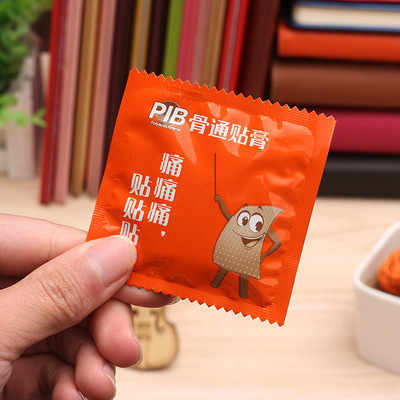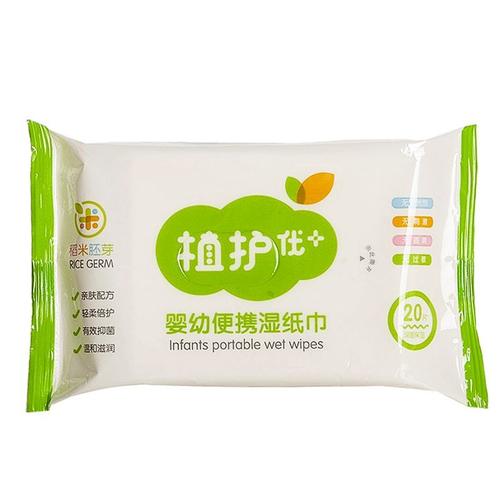Basic knowledge for Wet Wipes
Wet wipes gradually become something common in our life. During travel, we would like them to clean our hands without water; for makeup removing, some special cleansing wipes can help; and even considering baby’s delicate skin, we have baby wipe.
1. Basic concepts
| Definition | Wet wipes are actually non-woven soaking in all kinds of functional liquids, which can clean, care skin and sterilize. They are disposable. |
| Constituents | Non-woven, functional liquid and package. |
| Application | To clean, care skin, sterilize and deodorize. |
| Features | Convenience, specified function and disposable. |
| Classification | Baby wipes, medical wipes, cleaning wipes and personal care wipes. |
| Standard for wet wipes | GB 15979 |
| Disinfecting raw material | By ultraviolet, ozone or oxidant |
2. How to produce wet wipes or wet tissue:
Non-woven roll - vertically folding on a machine - liquid adding - horizontal cutting - stacking - detecting (moisture content, weight, foreign matters) - sachet packing (by machine or manually) - sealing - detecting again (seal) - boxing

3. Non-woven for wet wipes
| Fiber netting | Straight or crossing |
| Texture | Plain, mesh (22 meshes per inch), pearl |
| Weight | 35-75gsm; the thicker, the more expensive |
| Material of special non-woven | 95% wood pulp and 5% viscose; pulp fiber is pretty short and breakable, but can be strengthened by viscose. |
| Why not polyester? Polyester is chemical fiber and cannot be recycled. |
| Feature | Breakable, degradable and recyclable |
4. Other materials for producing wet wipes
| Spunlace non-woven | The commonest material for wet wipes |
| Wet strength paper | Being damp or soaked in water, the paper can keep dry strength over 15% and doesn’t break. It is manufactured by chemical wood pulp or cotton pulp. Besides, some wet strength agents are added during manufacturing, such as melamine resin and polychloroprene. |
| Airlaid paper | Mainly manufactured from wood pulp, together with chemical adhesive |
| Hot rolled non-woven | Similar to spun-bond non-woven. They are different in softness, fiber thickness and length. |
| Production flow: ES fiber - netting - hot rolling |
| Spun-bond non-woven | Long and thin fiber of large tension |
| Production flow: PP granule - melting in high temperature - spinneret - falling free |
5. Cause of wipe scraps:
1) Weak strength;
2) Straight net causes more scraps than crossing net;
3) Fibers wind infirm.
6. Cause of wipe pilling:
1) Related with non-woven thickness and processing technology;
2) Viscose doesn’t pill while polyester does;
7. Water absorption:
Cotton fiber > viscose > polyester
8. How to compare proportion of polyester and viscose
Proportion of polyester and viscose can be judged by the smell and ash after wet wipes are ignited. Burning polyester smells burnt and viscose has similar smell with burning cotton. If polyester is more than viscose, the ash will be hard, granular and rough; otherwise, the ash touches fine.
9. Solution for wet wipes:
1) Preservative liquid: to prevent wipes from mildewing and to sterilize;
2) Functional liquid: to give wet wipes functions of makeup or nail polish removing;
3) Amount of liquid is generally 2-4 times of the weight of non-woven.

10. Chemical liquid for wet wipes
1) Humectant: Propylene glycol is a solvent as well as a humectant. It can help to dissolve effective ingredients in water so that water will not ventilate. Almost all wet wipes contains it.
2) Preservative: Phenoxyethanol, methylparaben and paraben. Wet wipes contains a large amount of water and different ingredients. Small amount of preservatives can keep effective ingredients active but have no negative influence on wipes.
3) Antibacterial agent: Sodium lactate and eucalyptus leaves. There are synthesized and natural antibacterial agents. They can sterilize and inhibit multiplication of bacteria.
4) Chelating agent: Tetrasodium hydroxyethylenediphosphonate. It functions to react with heavy metal ions in water or raw material. As a result, these ions will not be absorbed by human skin.
5) Other natural ingredients:
a. Tea tree essential oil
b. Peppermint
c. Eucalyptus leaves essence
d. Chamomile oil: to diminish inflammation
e. Aloe Extract: to moisturize
f. Propyleneglycol: perhaps leading to contact dermatitis
g. Cetylpyrieiniumchloride: irritating skin, mucosa and eyes
h. Ethanol: irritating skin, mucosa and easily causing babies’ allergy
i. Paraben: a preservative which might cause contact dermatitis
11. Wet wipe packing
1) Package: single-piece package (three-side seal or four-side seal), multi-piece package (unsealed or covered), canister, box, can...
2) Package size, weight, material and appearance should be noticed;
3) Package size: depending on wipe size and folding way;
4) Common wipe size: 15*20cm;
5) Folding way: Z type, double Z type, C type, M type...
6) Packing material: PVC/alu film, paper/alu film, PE, OPP...
7) Common packing material: PE+PET (thickness: 7.5-9c), PE+PET+alu, paper+alu+polysurlyn

 English
English



